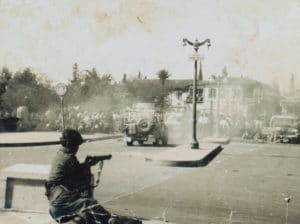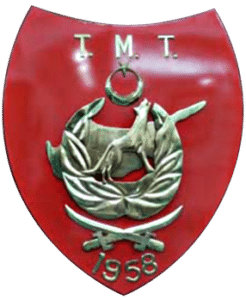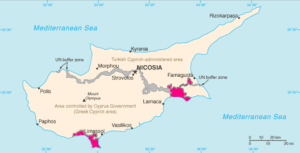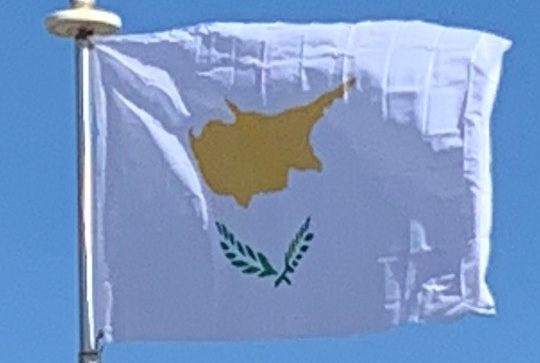
Although after the Zürich and London conferences Turkey seemed to accept the existence of the Cypriot state and to distance itself from its policy of favoring the partition of the island, the goal of the Turkish and Turkish Cypriot leaders remained that of creating an independent Turkish state in the northern part of the island.
In January 1950, the Church of Cyprus organised a referendum under the supervision of clerics and with no Turkish Cypriot participation, where 96% of the participating Greek Cypriots voted in favor of enosis, The Greeks were 80.2% of the total island’ s population at the time (census 1946). Restricted autonomy under a constitution was proposed by the British administration but eventually rejected. In 1955 the EOKA organisation was founded, seeking union with Greece through armed struggle. At the same time the Turkish Resistance Organisation (TMT), calling for Taksim, or partition, was established by the Turkish Cypriots as a counterweight. British officials also tolerated the creation of the Turkish underground organisation T.M.T.

The Secretary of State for the Colonies in a letter dated 15 July 1958 had advised the Governor of Cyprus not to act against T.M.T despite its illegal actions so as not to harm British relations with the Turkish government.
Independence and Inter-Communal Violence:
On 16 August 1960, Cyprus attained independence after the Zürich and London Agreement between the United Kingdom, Greece and Turkey. Cyprus had a total population of 573,566; of whom 442,138 (77.1%) were Greeks, 104,320 (18.2%) Turks, and 27,108 (4.7%) others. The UK retained the two Sovereign Base Areas of Akrotiri and Dhekelia, while government posts and public offices were allocated by ethnic quotas, giving the minority Turkish Cypriots a permanent veto, 30% in parliament and administration, and granting the three mother-states guarantor rights.

However, the division of power as foreseen by the constitution soon resulted in legal impasses and discontent on both sides, and nationalist militants started training again, with the military support of Greece and Turkey respectively. The Greek Cypriot leadership believed that the rights given to Turkish Cypriots under the 1960 constitution were too extensive and designed the Akritas plan, which was aimed at reforming the constitution in favor of Greek Cypriots, persuading the international community about the correctness of the changes and violently subjugating Turkish Cypriots in a few days should they not accept the plan. Tensions were heightened when Cypriot President Archbishop Makarios III called for constitutional changes, which were rejected by Turkey and opposed by Turkish Cypriots.
Inter-communal violence erupted on 21 December 1963, when two Turkish Cypriots were killed at an incident involving the Greek Cypriot police. The violence resulted in the death of 364 Turkish and 174 Greek Cypriots, destruction of 109 Turkish Cypriot or mixed villages and displacement of 25,000–30,000 Turkish Cypriots. The crisis resulted in the end of the Turkish Cypriot involvement in the administration and their claiming that it had lost its legitimacy; the nature of this event is still controversial. In some areas, Greek Cypriots prevented Turkish Cypriots from travelling and entering government buildings, while some Turkish Cypriots willingly withdrew due to the calls of the Turkish Cypriot administration. Turkish Cypriots started living in enclaves; the republic’s structure was changed, unilaterally, by Makarios and Nicosia was divided by the Green Line, with the deployment of UNFICYP troops.
